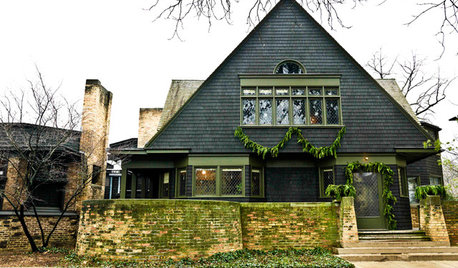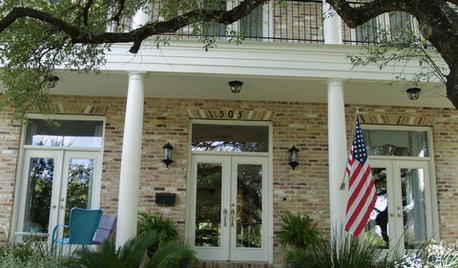Please ID These Twelve Oaks
Nancy Barginear
16 years ago
Related Stories

DECORATING GUIDESPlease Touch: Texture Makes Rooms Spring to Life
Great design stimulates all the senses, including touch. Check out these great uses of texture, then let your fingers do the walking
Full Story
SUMMER GARDENINGHouzz Call: Please Show Us Your Summer Garden!
Share pictures of your home and yard this summer — we’d love to feature them in an upcoming story
Full Story
REMODELING GUIDESRenovation Material: Cerused Oak
This traditional material adds welcome texture to the sleek surfaces of modern furniture, cabinetry and more
Full Story
KITCHEN OF THE WEEKKitchen of the Week: Goodbye, Honey Oak — Hello, Minty Green
After more than 30 years, the Kloesels revamped their space to reflect their rural country town and Victorian-style home
Full Story
REMODELING GUIDESYour Floor: An Introduction to Solid-Plank Wood Floors
Get the Pros and Cons of Oak, Ash, Pine, Maple and Solid Bamboo
Full Story
KITCHEN DESIGNKitchen of the Week: Industrial Design’s Softer Side
Dark gray cabinets and stainless steel mix with warm oak accents in a bright, family-friendly London kitchen
Full Story
ECLECTIC HOMESHouzz Tour: Problem Solving on a Sloped Lot in Austin
A tricky lot and a big oak tree make building a family’s new home a Texas-size adventure
Full Story
MOST POPULARExperience the Holidays at Frank Lloyd Wright's Home and Studio
Handmade decorations, greenery and gifts show how the famed architect and his family celebrated Christmas in their Oak Park home
Full Story
HOUZZ TOURSHouzz Tour: A New Home Honors a Historic Neighborhood
Stained glass, red oak floors and other traditional details give a newly built home in Texas an antique feel that fits right in
Full Story
KITCHEN DESIGNKitchen of the Week: Traditional Shaker Kitchen in a London Townhouse
Personalized features, solid oak cabinet frames and a custom ladder system make for an elegant and highly efficient space
Full Story





bengz6westmd
lucy
Related Discussions
oak tree ID help please
Q
Can someone please ID this oak?
Q
Tuesday's Twelve Treasures (photos)
Q
Please ID these nodules on Cathedral Live Oak Treet
Q
quercus_macrocarpa
alabamatreehugger 8b SW Alabama
kman04
bengz6westmd
treeguy123
alabamatreehugger 8b SW Alabama
treeguy123
treeguy123
quercus_macrocarpa
Nancy BarginearOriginal Author
quercus_macrocarpa
quirkyquercus
quercus_macrocarpa
treeguy123
quirkyquercus
Nancy BarginearOriginal Author
quercus_macrocarpa
MissSherry
kman04
quercus_macrocarpa
Nancy BarginearOriginal Author
bengz6westmd
quercus_macrocarpa
Nancy BarginearOriginal Author
alabamatreehugger 8b SW Alabama
Nancy BarginearOriginal Author
Nancy BarginearOriginal Author